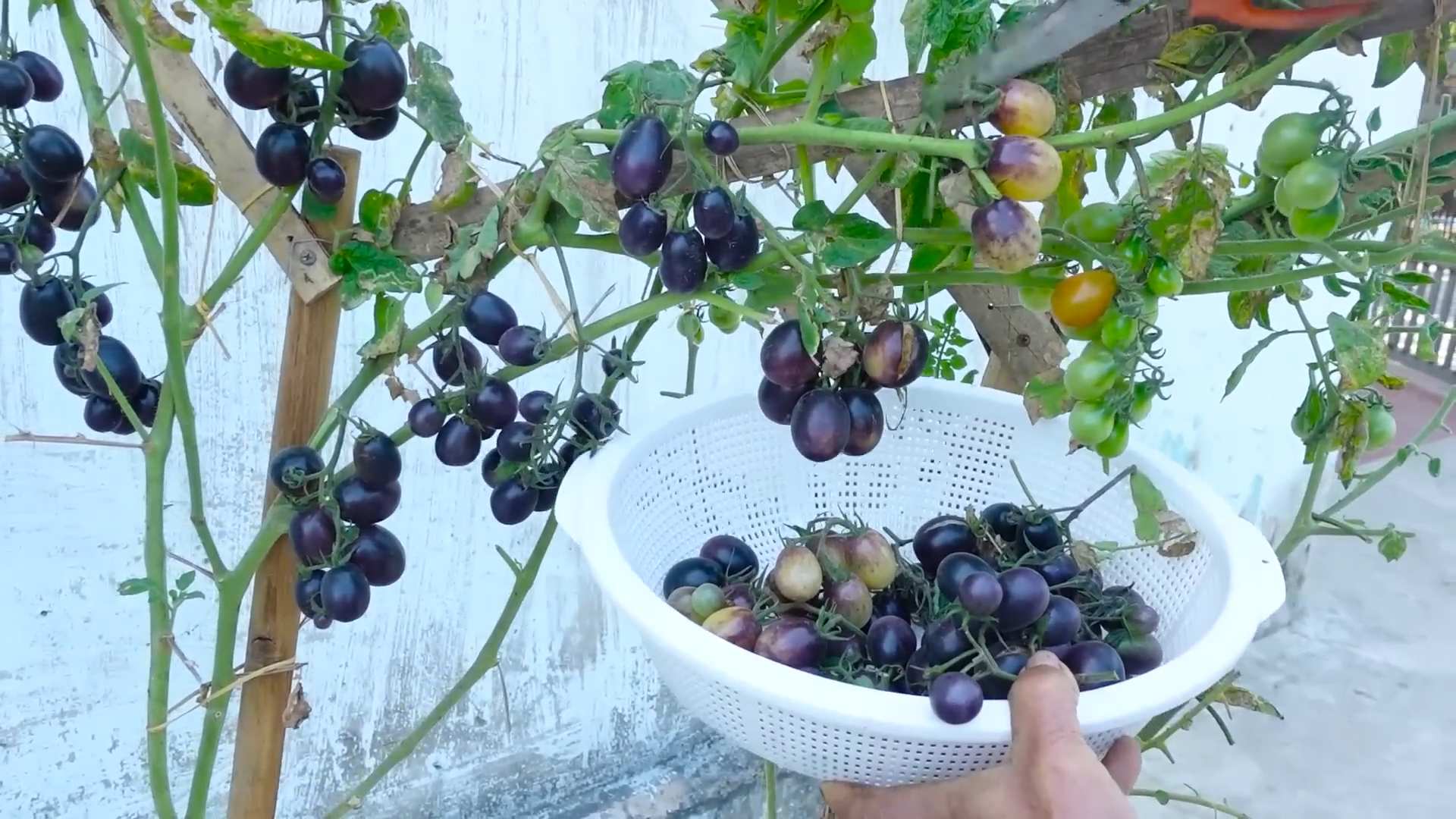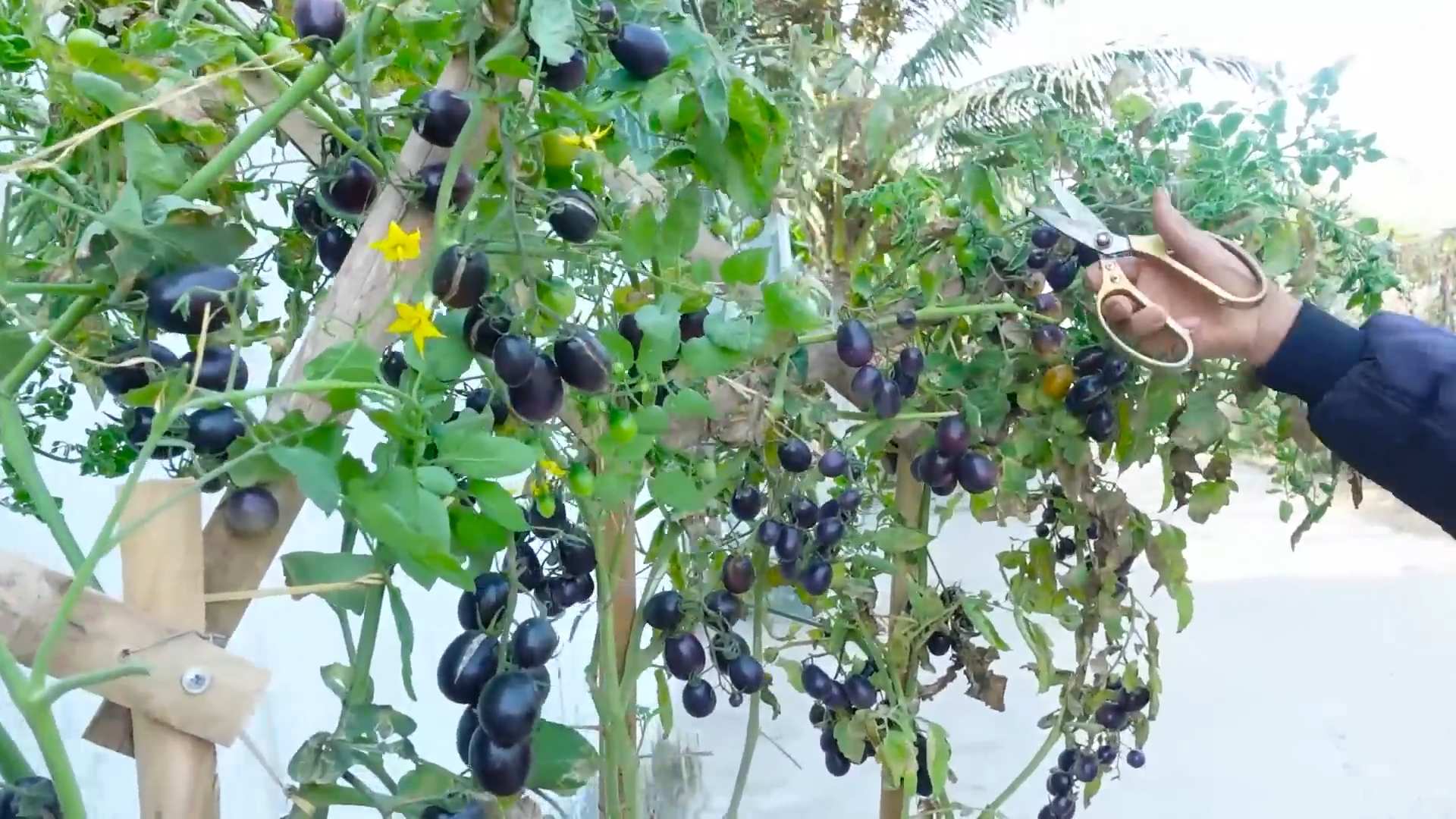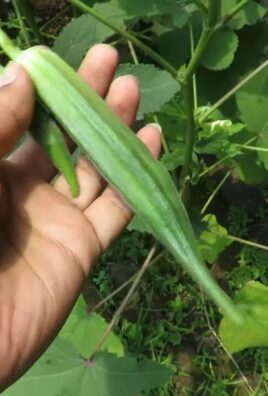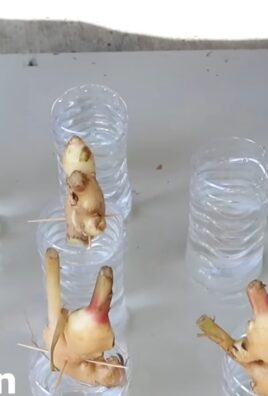Growing grape tomatoes can be incredibly rewarding, offering a burst of sweet, juicy flavor straight from your backyard! But let’s be honest, sometimes it feels like you’re battling pests, diseases, and unpredictable weather more than actually harvesting those delicious little gems. Have you ever dreamed of plucking handfuls of perfectly ripe grape tomatoes, enough to share with friends and family, without the constant worry and frustration? Well, you’re in the right place!
The history of tomatoes, including our beloved grape variety, is fascinating. Originating in South America, tomatoes were initially viewed with suspicion in Europe, even considered poisonous! Thankfully, that misconception faded, and tomatoes, in all their forms, became a culinary staple worldwide. Today, growing grape tomatoes is a popular pastime, connecting us to the earth and providing fresh, healthy food.
But why do you need these DIY tricks and hacks? Because let’s face it, gardening can be tough! Many of us struggle with limited space, poor soil, or simply a lack of time. These simple, effective techniques will empower you to overcome those challenges and cultivate a thriving grape tomato garden, no matter your experience level. I’m excited to share my favorite tips and tricks that will help you maximize your yield and enjoy a bountiful harvest. Let’s get started!

Growing Grape Tomatoes: A Beginner’s Guide to a Bountiful Harvest
Hey there, fellow gardening enthusiasts! I’m so excited to share my experience and tips for growing delicious grape tomatoes right in your own backyard (or even on your balcony!). Grape tomatoes are super rewarding to grow – they’re prolific, relatively easy to care for, and bursting with flavor. Get ready for a summer filled with sweet, juicy snacks!
Choosing Your Grape Tomato Variety
Before we dive into the nitty-gritty, let’s talk about choosing the right grape tomato variety for you. There are tons of options out there, each with its own unique characteristics. Here are a few of my favorites:
* ‘Sungold’: These are incredibly sweet and have a beautiful golden-orange color. They’re a bit more delicate than some other varieties, but the flavor is worth it!
* ‘Juliet’: This is a classic grape tomato, known for its disease resistance and high yields. The fruits are firm and slightly tangy.
* ‘Santa’: Another reliable variety, ‘Santa’ produces clusters of bright red, teardrop-shaped tomatoes. They’re perfect for snacking or adding to salads.
* ‘Black Pearl’: If you’re looking for something a little different, try ‘Black Pearl’. These tomatoes are a deep reddish-purple and have a rich, complex flavor.
Consider your climate, available space, and personal taste preferences when making your choice. Seed packets and plant labels usually provide helpful information about each variety.
Starting Your Grape Tomato Plants
You have two main options for starting your grape tomato plants: buying seedlings from a nursery or starting them from seed indoors. I personally prefer starting from seed because it gives me more control over the process and allows me to choose from a wider variety of cultivars.
Starting from Seed Indoors
Starting your own seeds indoors is a great way to get a head start on the growing season, especially if you live in a cooler climate. Here’s how I do it:
1. Gather your supplies: You’ll need seed starting trays or small pots, seed starting mix (not regular potting soil!), grape tomato seeds, a spray bottle, and a grow light (optional, but highly recommended).
2. Sow the seeds: Fill your seed starting trays or pots with seed starting mix. Moisten the mix with the spray bottle. Sow 2-3 seeds per cell or pot, about ¼ inch deep. Gently cover the seeds with more mix.
3. Water gently: Use the spray bottle to lightly water the soil. Avoid overwatering, which can lead to damping off (a fungal disease that kills seedlings).
4. Provide warmth and light: Place the trays or pots in a warm location (around 70-75°F) and under a grow light. If you don’t have a grow light, a sunny windowsill will work, but be sure to rotate the trays regularly to prevent the seedlings from leaning towards the light.
5. Keep the soil moist: Check the soil moisture daily and water as needed to keep it consistently moist but not soggy.
6. Thin the seedlings: Once the seedlings have their first true leaves (the second set of leaves that appear after the initial seed leaves), thin them to one seedling per cell or pot. Snip off the weaker seedlings at the soil line with scissors.
7. Harden off the seedlings: About a week before you plan to transplant the seedlings outdoors, you’ll need to harden them off. This process gradually acclimates them to outdoor conditions. Start by placing the seedlings outdoors in a sheltered location for an hour or two each day, gradually increasing the amount of time they spend outside.
Buying Seedlings from a Nursery
If you don’t have the time or space to start your own seeds, buying seedlings from a nursery is a perfectly fine option. Just be sure to choose healthy-looking plants with sturdy stems and no signs of disease or pests.
Transplanting Your Grape Tomato Plants
Once the danger of frost has passed and the soil has warmed up, it’s time to transplant your grape tomato plants outdoors.
1. Choose a sunny location: Grape tomatoes need at least 6-8 hours of sunlight per day to thrive.
2. Prepare the soil: Amend the soil with compost or other organic matter to improve drainage and fertility. Grape tomatoes prefer well-drained soil with a pH of 6.0-6.8.
3. Dig the holes: Dig holes that are slightly larger than the root balls of your seedlings. Space the plants about 2-3 feet apart.
4. Plant the seedlings: Gently remove the seedlings from their containers and loosen the root balls. Place the seedlings in the holes and backfill with soil. Bury the stem up to the first set of leaves – this will encourage the plant to develop more roots.
5. Water thoroughly: Water the newly transplanted seedlings thoroughly.
6. Add support: Grape tomato plants can get quite tall and heavy, so it’s important to provide them with support. You can use stakes, cages, or trellises. I personally prefer using tomato cages because they’re easy to install and provide good support.
Caring for Your Grape Tomato Plants
Once your grape tomato plants are in the ground, it’s important to provide them with proper care to ensure a bountiful harvest.
* Watering: Water your grape tomato plants regularly, especially during hot, dry weather. Aim to water deeply and less frequently, rather than shallowly and more often. Avoid getting the leaves wet, as this can encourage fungal diseases.
* Fertilizing: Fertilize your grape tomato plants every 2-3 weeks with a balanced fertilizer. You can also use a fertilizer specifically formulated for tomatoes.
* Pruning: Pruning your grape tomato plants can help to improve air circulation and prevent disease. Remove any suckers (the small shoots that grow between the main stem and the branches) that appear below the first flower cluster.
* Pest and disease control: Keep an eye out for pests and diseases, such as aphids, whiteflies, and early blight. Treat any problems promptly with appropriate organic or chemical controls. I prefer using organic methods whenever possible.
* Mulching: Apply a layer of mulch around your grape tomato plants to help retain moisture, suppress weeds, and regulate soil temperature. Straw, wood chips, or shredded leaves are all good options.
Harvesting Your Grape Tomatoes
The best part of growing grape tomatoes is, of course, harvesting them! Grape tomatoes are typically ready to harvest about 60-70 days after transplanting.
* Check for ripeness: The tomatoes should be fully colored and slightly soft to the touch.
* Harvest carefully: Gently twist or snip the tomatoes from the vine.
* Store properly: Store your harvested grape tomatoes at room temperature for the best flavor. You can also refrigerate them, but they may lose some of their flavor and texture.
Troubleshooting Common Problems
Even with the best care, you may encounter some problems while growing grape tomatoes. Here are a few common issues and how to address them:
* Blossom end rot: This is a condition that causes the bottom of the tomatoes to turn black and leathery. It’s usually caused by calcium deficiency, which can be due to inconsistent watering or poor soil. To prevent blossom end rot, water your plants regularly and amend the soil with calcium-rich amendments like bone meal or crushed eggshells.
* Early blight: This is a fungal disease that causes dark spots to appear on the leaves. To prevent early blight, provide good air circulation around your plants and avoid getting the leaves wet when watering. If you see signs of early blight, remove the affected leaves and treat the plants with a fungicide.
* Aphids: These small, sap-sucking insects can weaken your plants and spread diseases. To control aphids, spray them with a strong stream of water or treat the plants with insecticidal soap.
* Tomato hornworms: These large, green caterpillars can quickly defoliate your tomato plants. Handpick them off the plants and drop them into a bucket of soapy water.
Enjoying Your Harvest
Now that you’ve successfully grown your own grape tomatoes, it’s time to enjoy the fruits of your labor! Grape tomatoes are delicious eaten fresh as a snack, added to salads, or used in cooking. Here are a few of my favorite ways to use them:
* Caprese salad: Combine grape tomatoes, fresh mozzarella, and basil leaves, and drizzle with balsamic glaze.
* Roasted grape tomatoes: Toss grape tomatoes with olive oil, garlic, and herbs, and roast them in the oven until they’re soft and bursting with flavor.
* Grape tomato pasta sauce: Sauté grape tomatoes with garlic, onions, and herbs, and simmer until they break down into a delicious pasta sauce.
* Grape tomato skewers: Thread grape tomatoes onto skewers with mozzarella balls, olives, and other vegetables for a fun and healthy appetizer.
Growing grape tomatoes is a rewarding experience that anyone can enjoy. With a little bit

Conclusion
So, there you have it! Mastering the art of growing grape tomatoes doesn’t require a green thumb blessed by the gardening gods. It’s about understanding a few key principles and applying them with a little patience and care. This DIY approach, focusing on [specific technique mentioned in the main article, e.g., strategic pruning, consistent watering, homemade fertilizer], is a game-changer for anyone looking to maximize their harvest and enjoy the unparalleled flavor of homegrown grape tomatoes.
Why is this a must-try? Because it puts you in control. You’re not relying on commercially grown tomatoes that may have traveled miles and lost their peak freshness. You’re nurturing your own little ecosystem, ensuring the best possible flavor and nutritional value. Plus, there’s an undeniable satisfaction that comes from harvesting something you’ve grown yourself. It’s a connection to nature, a mindful activity, and a delicious reward all rolled into one.
But the beauty of this DIY journey is its adaptability. Feel free to experiment! Try different varieties of grape tomatoes – some are sweeter, some are tangier, and some are more disease-resistant. If you’re short on space, consider growing them in hanging baskets or containers. You can even tailor your fertilizer blend to suit your specific soil conditions. The possibilities are endless.
Consider these variations to elevate your grape tomato growing experience:
* Vertical Gardening: If space is a constraint, explore vertical gardening techniques. Trellises, cages, or even repurposed pallets can provide support for your grape tomato plants, allowing them to grow upwards and maximize yield in a small area.
* Companion Planting: Enhance the growth and flavor of your grape tomatoes by planting them alongside beneficial companion plants. Basil, for example, is known to repel pests and improve the taste of tomatoes. Marigolds are also effective at deterring nematodes.
* Hydroponics: For a more advanced approach, consider growing your grape tomatoes hydroponically. This soilless method can result in faster growth and higher yields, but it requires more specialized equipment and knowledge.
* Grafting: Grafting involves joining the top part of one plant (the scion) to the root system of another (the rootstock). This technique can be used to combine desirable traits, such as disease resistance and fruit quality.
Don’t be afraid to get your hands dirty and embrace the learning process. Every mistake is a lesson, and every successful harvest is a triumph.
We’re confident that this DIY trick will transform your grape tomato growing experience. So, grab your seeds, prepare your soil, and get ready to enjoy the fruits (or rather, the vegetables!) of your labor.
And most importantly, we want to hear about your journey! Share your experiences, your successes, and your challenges in the comments below. Let’s create a community of grape tomato enthusiasts, learning and growing together. What varieties did you try? What challenges did you face? What tips and tricks did you discover along the way? Your insights could be invaluable to other aspiring gardeners. Happy growing!
Frequently Asked Questions (FAQ)
What is the best time to start growing grape tomatoes?
The ideal time to start growing grape tomatoes depends on your climate. In general, you should start seeds indoors 6-8 weeks before the last expected frost. If you live in a warmer climate with a longer growing season, you can start seeds directly outdoors after the last frost. However, starting indoors gives you a head start and allows you to control the growing environment more effectively. Consider your local climate and growing season when determining the best time to start your seeds.
How much sunlight do grape tomatoes need?
Grape tomatoes thrive in full sunlight, requiring at least 6-8 hours of direct sunlight per day. Insufficient sunlight can lead to leggy growth, reduced fruit production, and bland-tasting tomatoes. Choose a location in your garden that receives ample sunlight throughout the day. If you’re growing grape tomatoes indoors, use grow lights to supplement natural sunlight and ensure they receive adequate illumination.
What kind of soil is best for growing grape tomatoes?
Grape tomatoes prefer well-draining soil that is rich in organic matter. Amend your soil with compost, aged manure, or other organic materials to improve its fertility and drainage. A slightly acidic soil pH of 6.0-6.8 is ideal for grape tomatoes. Avoid heavy clay soils, as they can retain too much moisture and lead to root rot. If you have clay soil, amend it with plenty of organic matter to improve its drainage.
How often should I water my grape tomato plants?
Water your grape tomato plants deeply and regularly, especially during hot, dry weather. Aim to keep the soil consistently moist but not waterlogged. Water at the base of the plants to avoid wetting the foliage, which can increase the risk of fungal diseases. Mulching around the plants can help retain moisture in the soil and suppress weed growth. The frequency of watering will depend on your climate, soil type, and the size of your plants. Check the soil moisture regularly and water when the top inch feels dry.
Do I need to prune my grape tomato plants?
Pruning grape tomato plants can improve air circulation, reduce the risk of disease, and encourage fruit production. Remove suckers (the small shoots that grow between the main stem and the branches) to direct the plant’s energy towards fruit development. You can also prune away any yellowing or diseased leaves. However, avoid excessive pruning, as it can reduce the plant’s ability to photosynthesize.
What are some common pests and diseases that affect grape tomatoes?
Grape tomatoes are susceptible to various pests and diseases, including aphids, whiteflies, tomato hornworms, early blight, and blossom end rot. Monitor your plants regularly for signs of infestation or disease. Use organic pest control methods, such as insecticidal soap or neem oil, to control pests. Prevent fungal diseases by providing good air circulation, avoiding overhead watering, and applying a fungicide if necessary. Blossom end rot is caused by calcium deficiency and can be prevented by ensuring adequate calcium levels in the soil and providing consistent watering.
How do I prevent blossom end rot in my grape tomatoes?
Blossom end rot, a common problem in tomatoes, is caused by a calcium deficiency, often due to inconsistent watering. To prevent it, ensure consistent watering, especially during fruit development. Amend your soil with calcium-rich materials like bone meal or crushed eggshells before planting. You can also use a calcium foliar spray if necessary. Avoid over-fertilizing with nitrogen, as it can interfere with calcium uptake.
When are grape tomatoes ready to harvest?
Grape tomatoes are typically ready to harvest 60-80 days after transplanting. The tomatoes should be fully colored (red, yellow, or orange, depending on the variety) and slightly soft to the touch. Gently twist the tomatoes off the vine, being careful not to damage the plant. Harvest regularly to encourage continued fruit production.
Can I grow grape tomatoes in containers?
Yes, grape tomatoes can be successfully grown in containers. Choose a large container (at least 10 gallons) with drainage holes. Use a high-quality potting mix and provide adequate support for the plants, such as a stake or cage. Water and fertilize regularly, as container-grown plants tend to dry out and deplete nutrients more quickly than those grown in the ground.
How can I improve the flavor of my homegrown grape tomatoes?
Several factors can influence the flavor of your homegrown grape tomatoes. Ensure they receive adequate sunlight, water, and nutrients. Avoid over-watering, as it can dilute the flavor. Allow the tomatoes to ripen fully on the vine before harvesting. Some gardeners believe that stressing the plants slightly by withholding water a few days before harvest can concentrate the flavors. Experiment with different varieties to find the ones that you enjoy the most.





Leave a Comment